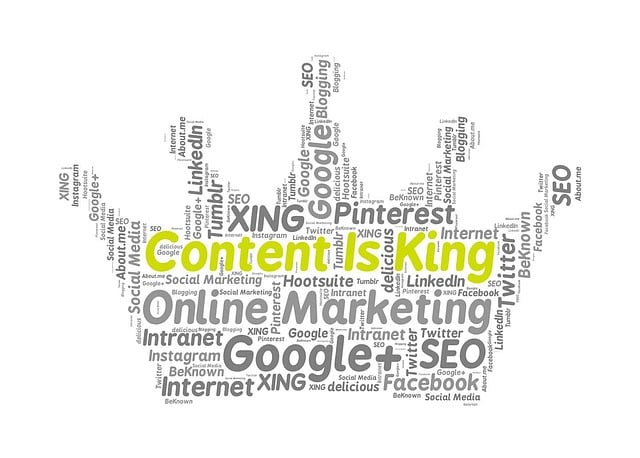Understanding Marketing Costs
Getting a grip on what you spend in marketing isn’t just for pencils and nerds, it’s a must-have power tool for CEOs, business owners, and those folks who eat data for breakfast. It shines a light on where the cash flies off to and how it’s backing up your master plan. Let’s slice into the pie of marketing costs.
Marketing Expenses Breakdown
Picture three buckets: people, gadgets, and how you get stuff done. Sorting out costs this way helps you see which chunks are going where for your marketing game plan.
| Expense Snapshots | What’s Inside? |
|---|---|
| People | Dollars shelled out for salaries and bennies for your squad. |
| Technology | Stuff like app fees and gizmo licenses. |
| Processes | The plays and moves supporting your marketing missions. |
If you want more lowdown on the money hustle in marketing, check our goodies on marketing financial planning and marketing cost structure.
Types of Marketing Costs
Spotting these different cost critters is like having night vision goggles for your budget. Here’s the rundown:
Fixed Costs: These guys stay as steady as a rock, didn’t matter if you’re selling donuts or space rockets. Think paychecks and office rent.
Variable Costs: These are your jumpy costs that hop around with each new campaign or production boost. Ad spend fits this bill.
Direct Costs: Cash that goes straight to a certain campaign. Stuff like promo materials and the cut for your sales champs.
Indirect Costs: Costs that aren’t pinned to one single campaign but still keep the whole ship sailing, like the cost to keep the lights on.
One-Time Costs: These are like party balloons—buy ’em once and be done with it, like paying for setting up a fancy new marketing gizmo.
Recurring Costs: These are the steady drip-drip-drip costs like the monthly tab for your marketing apps.
By sniffing out these different cost creatures, the folks at the helm can steer the budget ship with more smarts, cooking up winning marketing budget strategies and giving their campaigns a good once-over with marketing campaign analysis.
Analyzing Marketing ROI
Grasping the return on investment (ROI) from marketing efforts keeps the gears of a business turning smoothly. Keeping tabs on this figure lets the head honchos steer resources wisely, beef up campaign success, and rake in the bucks.
Importance of Marketing ROI
Nailing down marketing ROI is like plotting the treasure map that connects profit and marketing mojo. It helps companies gauge how their promotion hustle boosts revenue and makes a solid case for marketing budgets. Without a crystal clear picture of ROI, businesses might end up throwing darts in the dark, guessing which strategies will hit the bullseye.
Businesses should shoot for that sweet spot—a marketing ROI ratio of 5:1 is golden, while 10:1 is making it rain. Ratios under 2:1? Those are sinking ships (Marketing Evolution). Nailing those benchmarks lets companies stack their results against the big league.
Calculating Return on Investment
Crunching marketing ROI means figuring out the dollars raked in from marketing adventures against what they cost. The go-to formula for this brain puzzle looks like this:
[ \text{Marketing ROI} = \frac{(\text{Sales Growth} – \text{Marketing Cost})}{\text{Marketing Cost}} ]
This magic math gives you the real scoop on marketing’s muscle by factoring in organic sales growth (Marketing Evolution).
Let’s break it down with an example, nice and easy:
| Sales Growth | Marketing Cost | Marketing ROI |
|---|---|---|
| $100,000 | $20,000 | 4.0 |
In this case, with an ROI of 4.0, every dollar poured into marketing nets four smackers in sales growth. These numbers are gold when deciding where to throw the budget and when cooking up marketing game plans.
Keeping tabs on marketing spend is key to ensuring the digits are spot on. It helps whip up realistic budgets, steer clear of tax blunders, and make choices driven by the data (Rippling). By streamlining marketing budget planning, businesses can squeeze every drop of value out of their promotional bucks.
To dive deeper into how numbers tell the story in marketing, including handy ways to measure and judge, check out our guide on marketing financial analysis.
Key Metrics for Marketing Performance
Nailing down the right numbers is a big deal if you’re a CEO, business owner, or marketing boss wanting to boost profits. There are a few numbers you can’t ignore: Customer Acquisition Cost (CAC), Customer Lifetime Value (CLV), and Conversion Rate (CVR). They’re like the holy grail of marketing stats.
Customer Acquisition Cost (CAC)
Think of Customer Acquisition Cost as the bill you get for every new customer who joins your gang. It’s super important because it tells you if you’re blowing too much cash on marketing or if you’ve got your budget just right.
| Metric | What It Means |
|---|---|
| CAC | All the costs tied up with snagging a fresh customer—from all that marketing jazz to sales activities. |
To figure out your CAC, tally up everything you spend on marketing and divide that by how many new customers you’ve bagged in a set time. A sky-high CAC can mean you’re shelling out too much on those ads, but a low CAC? That’s a sign you’re doing something right.
Customer Lifetime Value (CLV)
Customer Lifetime Value doesn’t just look at today’s dollars—it’s about the long game. It’s the total moolah a customer brings in from the moment they walk in till they’re done with you. It helps you see how valuable they are in the long run, so you know where to spend your energy.
| Metric | What It Means |
|---|---|
| CLV | The complete dough a customer spends over their full time with the business. |
When working out CLV, you need to pin down how much a customer will drop over their lifetime with you. Zeroing in on current customers sometimes pays off more than chasing new ones, and it can make that cash register sing with less effort (Oracle).
Conversion Rate (CVR)
Conversion Rate is like the nitty-gritty of how well your ad blitz is working. It’s the bit where visitors actually do something, like click “buy now” or sign up for that newsletter.
| Metric | What It Means |
|---|---|
| CVR | The percentage of folks that do what you’re aiming for in a campaign. |
A juicy CVR shows your audience is digging the message and lining up to give you their business. It’s a sign you’re onto a winner and can shape future plans around what’s already winning. To boost those numbers, dig into what your customers are up to and tweak your strategies accordingly.
Keep an eye on CAC, CLV, and CVR to make savvy choices about where to throw your marketing dollars. It helps ramp up how well your marketing is doing. For a better understanding, check out the marketing cost analysis to really stretch your ROI and make those marketing bucks count.
Sure thing, let’s spice up this content a bit and make it more engaging.
Strategies to Optimize Marketing Costs
Cutting those marketing expenses? Oh yeah, it’s the holy grail for businesses looking to boost profits. Smart strategies keep the bank smiling and performance sky-high without losing any quality mojo along the way.
Cost-Effective Digital Marketing
In a world where the internet runs the show, picking the right spots to spend those ad dollars can make or break your marketing game. We’re talking social media, Google searches, and those crafty mobile ads you click on. Smart spending here means going the programmatic route; that’s basically using cutting-edge algorithms to buy your ads. Think of it as auto-pilot for your ad space, hitting all the right targets and leaving behind the fluff (LinkedIn).
And let’s not forget about our pals, the influencers. Teaming up with these trendsetters can connect your brand to audiences in a way old-school ads can’t. Higher engagement rates? You betcha. Better bang for your buck? Absolutely.
| Digital Marketing Strategy | Perks |
|---|---|
| Programmatic Advertising | Automates ad buying, hits targets, slashes waste |
| Influencer Marketing | Bridges genuine connections with peeps |
Leveraging Data Analytics
Data is king, folks. Well, it’s also the queen, the prince, and the entire royal family when it’s steering your marketing efforts. These nifty analytics tools can save marketers up to 100 hours a week, keeping data neat and tidy. They make it easier for you to figure out what the consumers want before they know it themselves. Use platforms like Mailchimp or Campaign Monitor to spy on how those emails are doing – who’s opening, clicking, or just ghosting them. It’s about beefing up your content strategy and maxing out engagement (Improvado Blog).
Throw in some AI smarts for even more savings on market research. Basically, you’ll have a secret weapon that processes data like a dream and eavesdrops on what people are saying on social media. All this helps in sharpening those marketing moves (LinkedIn).
| Data Analytics Benefits | Impact |
|---|---|
| Streamlined processes | Saves time and resources, big-time! |
| Informed decisions | Supercharges campaign effectiveness |
Maximizing ROI with Effective Tools
Using the right gear separates the winning companies from the eh-why-not ones. Hook up with tools that eyeball your marketing performance – tracking those key metrics makes sure every cent is pulling its weight.
Get on board with budgeting tools to watch those nickels like a hawk. You’ll see just where the money goes and where you can save without missing your profit parade. Check out our deep dive on marketing budget optimization for more hacks.
| Tool Group | Main Job |
|---|---|
| Performance Metrics Tools | Tracks and crunches campaign data |
| Financial Planning Tools | Keeps your budget in check |
With these nifty strategies in play, CEOs, business owners, and marketing pros can level up their marketing spend game, padding the profits while making the business soar to new heights.
Managing Marketing Expenses
Juggling marketing costs, if done right, can give you the biggest bang for your buck while firing up business progress. We’re talking about setting up budgets, keeping tabs on spending, and having a crucial tax chat about those deductible marketing costs.
Budget Allocation Strategies
Having a money plan that’s not just sitting pretty on paper is a game-changer. A smart budget zooms in on three main spends: the people who hustle for you, the tech that keeps things snappy, and all the other gears turning the wheels.
| Category | Examples of Expenses |
|---|---|
| People | Salaries, health and other perks |
| Technology | Software fees, licenses you can’t do without |
| Processes | Ad campaigns, events, swag for promotions |
A dollar here, a dollar there—systematic funding lets brands dabble in a mix of old-school ads and online buzz. Curious for more insights? Check out the lowdown on marketing budget planning.
Tracking and Analyzing Expenses
Keeping an eagle eye on marketing spends stops money from tumbling into a black hole. A slick tracking system is your best friend, spotting snags and offering golden nuggets of wisdom for smarter spend games.
Here’s why you should care about tracking expenses:
- Get clear-cut return data for smarter money moves.
- Sidestep tax hiccups.
- Forge foolproof, data-smoothed budgets.
- Pump up strategic wits with sharp insights (Rippling).
Think about getting your tracking game down pat, following these stages: What we guess, what we’ve promised, what we’ve blown, and what’s balanced out. Keeping it neat keeps the financial pulse steady and your marketing mojo in top gear. Get more tips in our piece on tracking marketing performance.
Tax-Deductible Marketing Costs
Spotting which marketing costs can slide off the tax bill is no small trick. The IRS might just give you a nod for certain ad spends as long as they’re normal business fodder. Standard tax write-offs in your marketing ledger might cover:
- Costs snagging new folks
- Dollars shelled out keeping loyal ones around
This magic trick can help slash taxable cash through bang-on brand investments (Rippling). Dig deeper into this money-saving rabbit hole with our chat on marketing cost-benefit analysis.
In short, if you’re wrangling marketing spends like a pro, you’ll be doling out cash with more thought, tracking every penny, and making taxes work for you. That way, CEOs, big bosses, and marketing maestros can not only keep the financial ship sailing smoothly but maybe even ramp up the profits game.




















